Menace and Love-Madness! Plunder and Lust!
Errol Flynn in the 1950s gets little mention, and perhaps justifiably so. His last contract with Warner Brother ran its course after 1953’s The Master of Ballantrae, to be followed by increasingly dire decline of the former matinee idol. Though he did return to Warners briefly for his final film, the almost autobiographic Too Much Too Soon, the man who launched to fame playing Dr. Peter Blood was simply petered out.
The last film under contract to Warners which he filmed in the States (as The Master of Ballantrae was filmed in Europe) was 1952’s forgotten Mara Maru. As the film opens following a blustery but well done Max Steiner theme, one thinks Beneath the 12-Mile Reef, but in black and white. There is our hero, puffy from perhaps too much rum the night before, in a diving suit. But alas, the film which bears the most resemblance to Mara Maru isn’t Robert Wagner’s opus, but an earlier Humphrey Bogart picture.
As others have noted elsewhere Mara Maru is almost a completely recycled telling of John Huston’s The Maltese Falcon, with Flynn taking the Bogart’s role, Ruth Roman taking Mary Astor’s, Raymond Burr standing in for Sydney Greenstreet and Paul Picerni doubling Peter Lorre. But the results aren’t unpleasing.
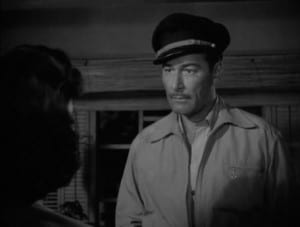 Shortly after Greg Mason’s (played by Flynn) partner is killed, Brock Benedict (Burr) approaches him with an offer. Partner with him and find a lost treasure- a reported one million dollars in diamond which apparently was lost when the PT boat Mason captained in World War Two was sunk. After a bit of a red-herring counter offer from another, Flynn and Burr set out to find the treasure.
Shortly after Greg Mason’s (played by Flynn) partner is killed, Brock Benedict (Burr) approaches him with an offer. Partner with him and find a lost treasure- a reported one million dollars in diamond which apparently was lost when the PT boat Mason captained in World War Two was sunk. After a bit of a red-herring counter offer from another, Flynn and Burr set out to find the treasure.
Benedict brings along Stella (Ruth Roman) the widow of Mason’s deceased partner and a weasel of a chap named Ranier (Paul Picerni). Stella plays both sides in her allegiance; one scene professing trust in Benedict but in the next warning off former love Mason. Yes, you see Mason and Stella were once an item, surely making relations with his partner a bit interesting- and given yet another parallel with Falcon.
 Flynn and Burr play a game of cat and mouse, alternatively destroying parts of the ship to thwart the other until finally Flynn dives for the treasure, which turns out to be not diamonds, but an encrusted cross stolen from a church in Manila. Amazingly, Flynn recovers the cross while diving in a typhoon- accompanied again by an effective musical accompaniment from Mr. Steiner.
Flynn and Burr play a game of cat and mouse, alternatively destroying parts of the ship to thwart the other until finally Flynn dives for the treasure, which turns out to be not diamonds, but an encrusted cross stolen from a church in Manila. Amazingly, Flynn recovers the cross while diving in a typhoon- accompanied again by an effective musical accompaniment from Mr. Steiner.
Unable to escape, Flynn runs the small ship aground and finally finds his way to the church, with Burr in hot pursuit. After a climactic struggle, Flynn dispatches his foe and is faced with his final decision. Return the cross to the church where it rightfully belongs or keep it for himself.
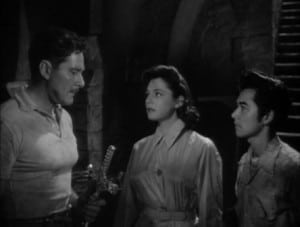 Though far from original or great, it is hard to fathom why Mara Maru languishes in such obscurity today. Many of its peers in the ranks of B pictures are much more widely known today. Perhaps it is exactly the lack of originality and Flynn’s potentially week casting (this is a far cry from The Adventures of Robin Hood, though again they weren’t making a lot of high cost swashbucklers in the 1950s).
Though far from original or great, it is hard to fathom why Mara Maru languishes in such obscurity today. Many of its peers in the ranks of B pictures are much more widely known today. Perhaps it is exactly the lack of originality and Flynn’s potentially week casting (this is a far cry from The Adventures of Robin Hood, though again they weren’t making a lot of high cost swashbucklers in the 1950s).
Flynn and the rest of the cast do an exception job given the material. Old Errol unintentionally looks like a tired veteran who is stumbling around the post-war Philippines running a dive salvage operation. His portrayal powerfully depicts a man torn between his own greed for material things and simply doing the right thing. Good to see even in less than ideal pictures he was still giving it his all.
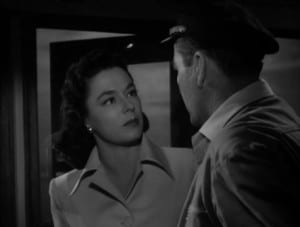 Though the potential love interest in Roman (Stella) never passes much muster, she is extremely effective in juxtaposing her torn loyalties in what may be one of her better performance on the big screen. After her biggest role in Hitchcock’s Strangers on a Train, Roman managed a brief further Hollywood career before transitioning effectively over to television.
Though the potential love interest in Roman (Stella) never passes much muster, she is extremely effective in juxtaposing her torn loyalties in what may be one of her better performance on the big screen. After her biggest role in Hitchcock’s Strangers on a Train, Roman managed a brief further Hollywood career before transitioning effectively over to television.
Raymond Burr, though cast against what one thinks of as his type today (think Perry Mason), was often on screen as the heavy. He’s extremely good here though the constant use of the Flynn’s character’s name “Mason” never sits quite right purely because of Burr’s later fame under the same name.
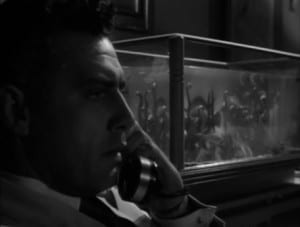 Though far from the hack one reviewer called him, nevertheless director Gordon Douglas fails to offer much to strengthen his pedigree here. Though perhaps best known for his later film Them!, Douglas had an extremely varied and effective career in a wide range of genres.
Though far from the hack one reviewer called him, nevertheless director Gordon Douglas fails to offer much to strengthen his pedigree here. Though perhaps best known for his later film Them!, Douglas had an extremely varied and effective career in a wide range of genres.
None really help here however, as portions of Mara Maru are dreadfully slow and devoid of much movement. After a fairly strong noiresque start, the film stumbles along for forty-five minutes or so until the adventure angle starts to get some traction. Strangely about the same time our interest returns as well.
Another factor with pulls Mara Maru away from any comparisons with Beneath the 12-Mile Reef – or another film from the same time period in Disney’s Twenty Thousand Leagues Under the Sea for that matter – is the appalling underwater footage. While in the other two films the underwater scenes (though in color mind you) are among the highlights of the films, here they are the pits.
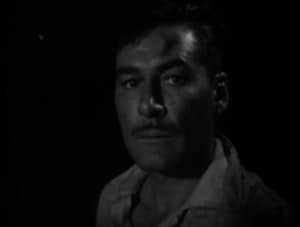 Beneath the waves in Mara Maru is as if they filmed at the bottom of a lake after stirring up all the silt from the bottom. The images are dark and struggle to keep focus and even the best attempts of Max Steiner’s good score can’t stop the damage. These scenes are undoubtedly the Achilles heel of the picture but thankfully they are fairly brief.
Beneath the waves in Mara Maru is as if they filmed at the bottom of a lake after stirring up all the silt from the bottom. The images are dark and struggle to keep focus and even the best attempts of Max Steiner’s good score can’t stop the damage. These scenes are undoubtedly the Achilles heel of the picture but thankfully they are fairly brief.
Surely not among his best pictures, Mara Maru has been unjustly lumped in with Flynn’s worst. Take the film for what it is worth and you will find it an enjoyable if perhaps not that original experience. The first and final thirds are rather good and the entire picture is highlighted by an overlooked score from Max Steiner. Thankfully after almost vanishing for far too many years, this one has again begun to be seen again thanks to recent release by the folks at the Warner Archives. Well work a viewing – and it is only 98 minutes to boot!
